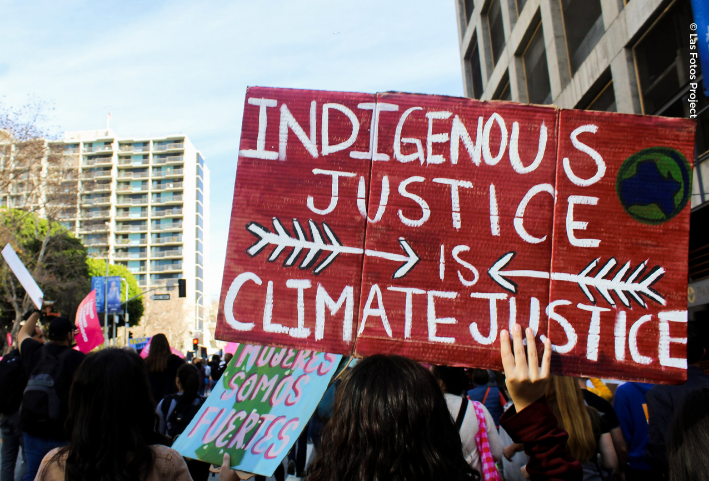By Saba Chaudhry
Indigenous peoples make up 6.2 per cent of the world population, represent 5,000 different cultures and have 4,000 surviving indigenous languages.
Despite facing various problems and challenges, their voices are often missing from mainstream media. Journalists and outlets ignore or misrepresent their voices in stereotypical or discriminatory ways. This is also seen in movies, where Indigenous communities are often shown negatively. or are portrayed as weak. This marginalisation can dismiss their fight for their rights.

It has been noted that even tech corporations contribute to cultural homogenisation and misrepresent diverse Indigenous cultures. Since May 2024, a four-minute video supposedly showing a Taiwan indigenous peoples dance group was widely circulated on social media and messaging apps. The video was a fake.
For news outlets, it is the responsibility of researchers and journalists to verify information, but sometimes fact-checking is skipped, and posts and stories are published without proper checking.
On social media, people posting information often don’t check whether what they are sharing is accurate, leading to misinformation and fake videos reaching large audiences.
While speaking to the Media Diversity Institute, Cailín B Burns, who is a Media and Communications officer at Survival International, an organisation working for Indigenous peoples, nature, and tribal people, said: ‘’Indigenous voices and narratives are often neglected in the media, both in the global south and the global north.
“ Indigenous voices are routinely ignored as their territories are bulldozed to make way for mining, logging and other extractive industries, or when they are evicted in the name of conservation. Even when Indigenous peoples’ territories are being destroyed, or they are being evicted, journalists will often report on the issue without any Indigenous peoples being invited to tell their stories, often quoting local non-Indigenous NGOS and activists instead. This invisibilizes Indigenous peoples and their struggles,’’ she added.
Indigenous voices in the global south media
The lack of diversity also leads to Indigenous perspectives being unreported in the media.
‘’Particularly in the global south, this enables narratives of Indigenous peoples to go unchallenged, so mining companies, or conservation organisations, can claim that projects, or Protected Areas, on their lands will benefit the Indigenous people,’’ said Burns.
‘’In the global south, it’s still quite common to see Indigenous peoples being described as backwards, primitive or in need of development. Of course, they are none of these things. If their land rights are protected, they are rich in all the things that give life meaning, and they live a way of life that they choose. Any ‘developments’ such as schooling, infrastructure projects, etc, should be initiated, chosen and controlled by them. It’s vital that the media allows Indigenous peoples’ voices to be heard so they can set their narrative about their ways of life, their lands and what their wishes are for the future,’’ she added.
‘’Global south mainstream media often portray indigenous people with a problematic lens, more and more focusing on poverty, and crime,’’ said Naznin Munni, a journalist and activist based in Bangladesh.
The media’s failure
There is also a worldwide media failure when it comes to reporting and fact-checking.
‘’Worldwide, the media’s failure to ensure that Indigenous peoples’ voices are heard, and a reluctance to foreground their resistance and struggles, also gives rise to the idea of Indigenous peoples as helpless victims rather than as resilient peoples who fighting to defend their lives, lands and ways of life,’’ said Burns.
‘’Some of this is born of racism, with journalists assuming that Indigenous peoples are unable to speak for themselves, in other cases it’s laziness on the part of journalists, who find it easier to pick up the phone to someone working in an office in a town, rather than make the effort to go and speak to Indigenous peoples living on their lands in remote places,’’ she added.
What needs to change
Amplifying grassroots voices and accountability are the first steps for journalists to focus on Indigenous justice. They can listen more and tell the stories that matter the most.
‘’Media plays a huge role in shaping the narratives and public responsibility, and I think journalists should play their role and be responsible in bringing the voices to the mainstream,’’ suggested Munni.
Mainstream media needs to ensure that Indigenous voices are foregrounded in all matters that concern their lands and ways of life. Indigenous peoples must have the chance to explain the impact of developments on their lands and not allow the companies or conservation organisations to erroneously claim that such projects are “win-win”. Indigenous peoples are also the best conservationists and guardians of nature, so it’s also important that, along with their rights, their enormous knowledge is recognised,” said Cailin.
